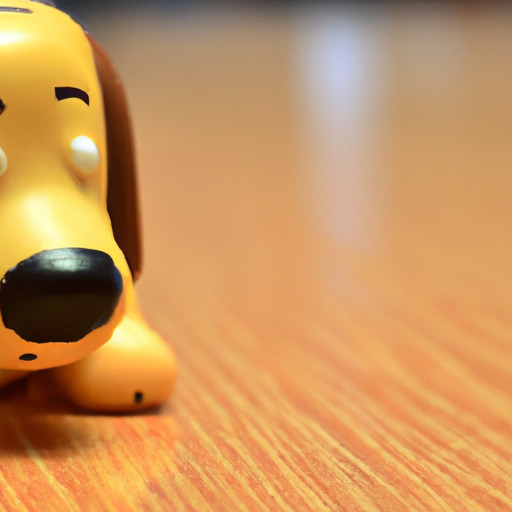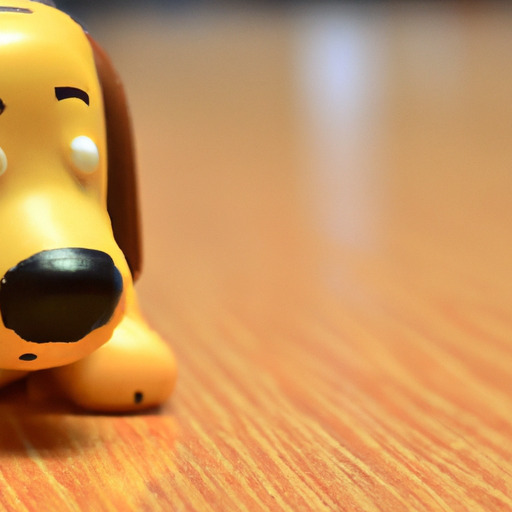Phone:
(701)814-6992
Physical address:
6296 Donnelly Plaza
Ratkeville, Bahamas.


In this article, you’ll learn why your dog might be crying while playing with their toys. It’s not uncommon for dogs to display this behavior, and understanding the reasons behind it can help you better understand your furry friend. So, let’s delve into the possible explanations for why your dog might cry during playtime.
One possible reason for your dog’s crying while playing with a toy is that they are experiencing pain or discomfort. It could be that they have accidentally hurt themselves while playing, such as biting too hard on a toy and hurting their teeth or gums. Another possibility is that your dog is experiencing some kind of physical discomfort, such as a hidden injury or underlying health issue. If you notice this behavior persisting or if your dog seems consistently distressed during play, it’s best to consult with your veterinarian to rule out any health concerns.


Table of Contents
Many dog owners have experienced the puzzling behavior of their dogs crying while playing with toys. It can be quite distressing and may leave you wondering why your furry companion is exhibiting such unusual reactions. In this article, we will delve into the reasons behind this behavior and explore various factors that might contribute to your dog’s tears during playtime.
Before we delve into the possible reasons for your dog’s crying, it’s crucial to understand the nature of dogs. Dogs are highly emotive animals and express their feelings through various behaviors. These behaviors may include tail wagging, barking, growling, licking, and even crying. It’s essential to recognize that dogs have their unique ways of showing emotions, just like humans do.
Emotional expression varies from dog to dog, and crying is one way some dogs express their emotions. Just like humans, dogs can experience a wide range of emotions, including joy, excitement, fear, anxiety, and even sadness. While crying in humans often relates to sadness, in dogs, it can signify a different emotional state or response.
Toys play a significant role in a dog’s life, providing mental stimulation, physical exercise, and a sense of comfort. However, some dogs may exhibit unusual reactions to toys, such as crying. This behavior may be confusing and concerning for dog owners. To better understand why your dog may cry while playing with toys, let’s explore a few possible reasons.
One possible reason for your dog to cry while playing with a toy could be physical discomfort. It’s important to consider whether your dog might be experiencing any physical pain or discomfort while engaging with the toy. Dogs, like humans, can experience sore muscles, joint pain, or even dental issues that may be exacerbated when playing with certain toys.
If you notice your dog crying and exhibiting signs of discomfort while playing, it’s essential to examine them for any physical injuries or abnormalities. Consulting with a veterinarian can help determine if there are any underlying health conditions causing your dog’s discomfort.
Another possible reason for your dog’s crying while playing could be stress or anxiety. Dogs, especially those with anxious tendencies, may feel overwhelmed or overstimulated during playtime. Stress or anxiety can manifest in various ways, including crying, trembling, panting excessively, or engaging in destructive behavior.
If your dog consistently demonstrates signs of stress or anxiety while playing with toys, it’s important to create a calm and stress-free environment for them. Gradually introducing toys and allowing them to familiarize themselves with the plaything at their own pace can help alleviate anxiety-related crying.
Dogs that have undergone past traumatic experiences may exhibit unusual reactions while playing with toys. These experiences can create negative associations, making them feel fearful or anxious when engaging with certain toys. In such cases, crying while playing may be a result of their previous traumatic encounters.
It’s crucial to be mindful of your dog’s past experiences and choose toys that do not trigger their negative emotions. Gradually reintroducing toys and providing positive reinforcement when they engage without any signs of distress can help them overcome their fears.


Dogs are highly empathetic creatures and often mirror the emotions of their human companions. They can sense when their owners are sad, stressed, or happy and respond accordingly. This empathy is not limited to humans but extends to other animals and even toys.
When dogs detect distress or sadness from their human companions, they may react by crying or behaving in a similar manner. Similarly, if a toy elicits sadness or discomfort in a dog, they may cry in response to the emotions they perceive from the toy.
Certain dog toys, such as squeaky toys, produce high-pitched noises that can be stimulating for dogs. While some dogs find these noises exciting and entertaining, others may be sensitive to the high-pitched sounds, causing them distress or discomfort.
If your dog cries specifically when exposed to high-pitched noises from toys, it’s possible that they are experiencing auditory sensitivity. In such cases, it’s advisable to avoid toys that produce loud or high-pitched sounds and opt for quieter alternatives.
Some dog toys may have features or attributes that overwhelm certain dogs, leading to crying. These features can include bright lights, moving parts, or complex mechanisms that may confuse or scare your furry friend. Overstimulation caused by these overwhelming toy features can elicit a crying response.
Observing your dog’s reactions to different toy features can help identify any triggers that may cause them distress. By choosing toys with simpler designs and features, you can create a more enjoyable and comfortable playtime experience for your canine companion.